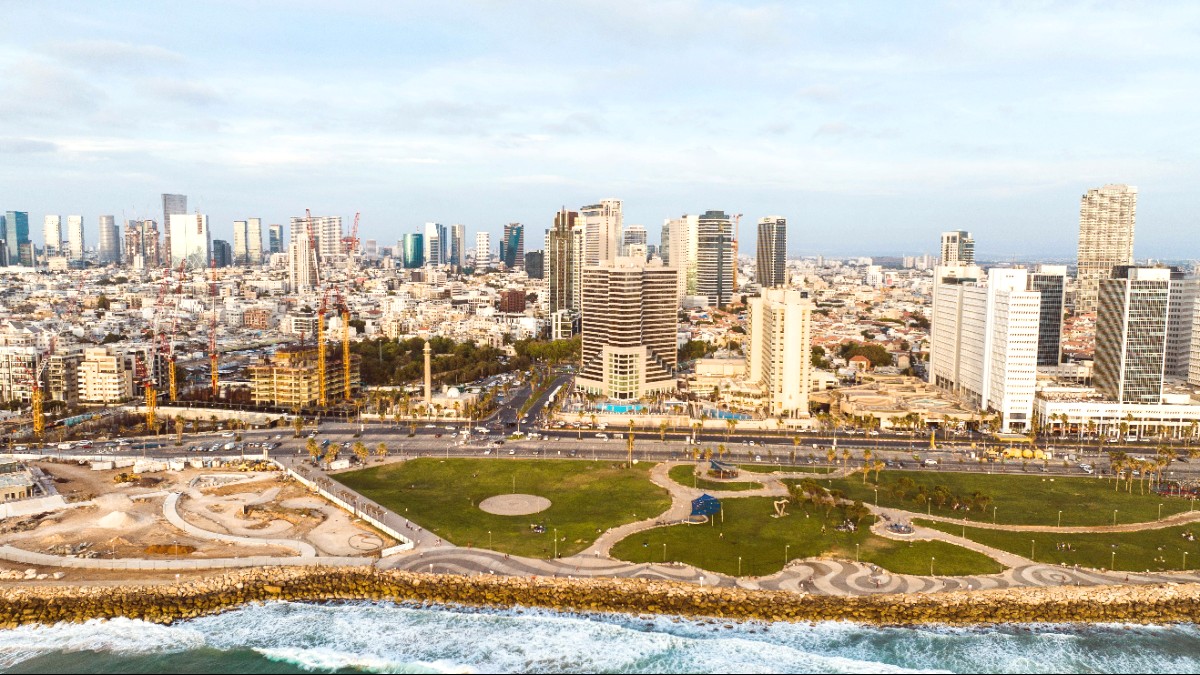
Israel
Tel Aviv's prominent landmarks include Old Jaffa, a historic port city with charming alleys and ancient sites. Rothschild Boulevard highlights the city's Bauhaus architecture, an UNESCO World Heritage site.
Carmel Market buzzes with fresh produce, spices, and street food. The Tel Aviv Promenade stretches along the coastline, offering beautiful views and access to popular beaches.
Avoid Friday afternoons at Carmel Market for less crowded experiences. Early mornings are quieter in Old Jaffa.
Old Jaffa port area holds significant archaeological finds, visible in the port and underground centers.
UNESCO site, explore around Rothschild, Bialik, and Dizengoff Streets.
First Jewish neighborhood outside Jaffa, with beautifully restored homes.
Former German Templar colony, now a charming precinct with preserved buildings.
St. Peter's Church (Jaffa), Al-Bahr Mosque (Jaffa), and the Great Synagogue (Allenby Street).
Tel Aviv offers green spaces and coastal beauty for relaxation and activity.
Tel Aviv's largest urban park with extensive green spaces, a river, and paths.
A central park in Tel Aviv, featuring a dog park and a pond.
The Bird Sanctuary in Yarkon Park provides home to various bird species.
Miles of sandy coastline along the Mediterranean, each beach with its own character.
Flows through Yarkon Park, offering opportunities for boating activities.
Jaffa Port offers panoramic views of the Tel Aviv skyline, especially at sunset.
Catch stunning panoramas of the Tel Aviv skyline from Kedumim Square or Abraham's Bridge.
Enjoy breathtaking sunset walks along the Tel Aviv Promenade overlooking the Mediterranean Sea.
Capture the unique Bauhaus buildings in the White City, an UNESCO World Heritage site, especially around Rothschild Boulevard.
Discover sites dedicated to significant historical events and cultural narratives.
Venture off the main tourist paths to discover some of Tel Aviv's unique and lesser-known spots.
These places offer authentic experiences and unique photo opportunities, away from the typical tourist crowds.
Explore unique markets and artistic spaces for a different perspective.
Connect with the local scene and experience what residents love.
Explore street art and find distinctive spots for memorable photographs.
Practical considerations for seamless sightseeing in Tel Aviv.
While Tel Aviv is rich with sites, consider day trips to surrounding regions for extended exploration.
Jerusalem and Masada are popular choices for their historical significance.
The Dead Sea and Ein Gedi offer unique landscapes and therapeutic experiences.
Explore the Galilee region and ancient cities like Akko and Haifa.
Many companies offer guided day tours from Tel Aviv to major attractions.
Find Day Trips HereRent a car for flexibility, but be ready for different driving conditions.
Public transport (trains, buses) connects Tel Aviv to other cities.
Explore the museum's comprehensive collection of Israeli and international art.
Plan Your VisitDiscover the history and culture of the Land of Israel, featuring archaeology and ethnography.
Discover ExhibitionsActivities suitable for all ages, offering learning and entertainment.
Museums and institutions catering to specific historical or cultural themes.
Consider purchasing a city pass if you plan to visit multiple museums.
Check opening hours and holiday closures in advance, especially during Shabbat.
Tel Aviv works to ensure its attractions are accessible, but historical areas may present challenges.
Most new and renovated attractions offer good accessibility.
Explore the UNESCO World Heritage site known for its Bauhaus architecture.
A central, tree-lined avenue with cafes and cultural institutions.
A historic port city with continuous habitation for thousands of years.
Consider visiting the flea market for unique finds.
A bustling market offering a sensory overload of local goods.
A lively atmosphere popular with both locals and visitors.
Landmarks like Carmel Market can be very busy, especially on Fridays. Consider visiting during weekdays for a calmer experience.
Guided tours often provide historical context and local insights that might be missed on self-guided visits.
Many attractions, especially Old Jaffa and Bauhaus areas, involve significant walking. Comfortable shoes are highly recommended.